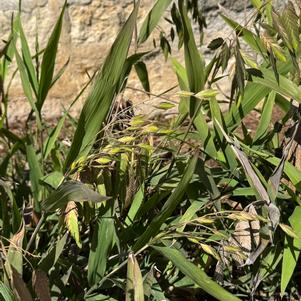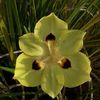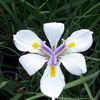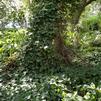
Mortellaro's Nursery
Shrubs, trees, ground covers, native plants, and seasonal color
Wholesale Only
Click on any of the alpha indexes below to view the corresponding lists of plants.
The default list is displayed alphabetically by common name for all plant types. You can view the plants by clicking on the Scientific Name or limit the plant type by using the drop down.
Plants actively being grown for the current season are shown -- selecting Discontinued Items will show plants we have offered in the past.

|
ImpatiensBotanical Name: Impatiens wallerana
Impatiens (Impatiens walleriana) is a shade-loving annual that provides bright, non-stop blooms throughout the warm season. Known for its soft, rounded foliage and dense floral coverage, it thrives in garden beds, borders, containers, and hanging baskets where sun exposure is limited. Blooming from spring through fall, it brings vibrant color in shades of pink, red, white, purple, and orange. The ProForm and Tango series of impatiens are particularly well-suited for Texas, offering vigorous growth and enhanced disease resistance compared to older varieties. Furthermore, the Imara® XDR series, stands for "Xtreme Disease Resistance." This designation indicates that these plants have been bred to exhibit a high level of resistance to diseases, particularly downy mildew, which has historically affected Impatiens walleriana varieties. Impatiens prefer moist, well-draining soil that is slightly acidic to neutral. They perform best in partial to full shade, where their delicate blooms remain vibrant and fresh. While not drought-tolerant, they recover quickly with consistent moisture. They are deer-resistant but may be browsed occasionally if alternative food sources are scarce. Reaching a mature size of 10-14 inches tall and 12-16 inches wide, impatiens are ideal for mass plantings where dense, colorful coverage is desired. When planting in groups, space plants 8-12 inches apart to ensure healthy airflow and prevent overcrowding. Unlike some other annuals, impatiens do not reseed reliably, requiring replanting each season. As an annual in USDA Zones 2-11, impatiens thrive in warm, shaded areas but cannot withstand frost. In Texas, they perform best in spring and fall, as extreme summer heat may cause stress if moisture levels are not maintained. Regular deadheading is unnecessary, as they self-clean and continuously produce new blooms. 2025 Cultivars Imara XDR Proform Mix [ More Info ]
|

|
Inland Sea OatsBotanical Name: Chasmanthium latifolium
Inland Sea Oats is a clumping, warm-season grass native to Texas and much of the southeastern U.S. It is well known for its graceful, arching foliage and distinctive seed heads, which resemble flattened oats. Inland Sea Oats is a popular choice for erosion control, shade gardens, and naturalized landscapes, thriving in areas where many other grasses struggle. This adaptable grass thrives in full sun to full shade and tolerates a wide range of soils, including acidic, alkaline, and clay-rich conditions. It is highly tolerant of poor drainage and seasonal flooding, making it ideal for planting near creeks, rain gardens, and low-lying areas. Once established, it is drought tolerant, though it prefers occasional watering during extended dry periods. Deer tend to avoid it, making it a low-maintenance option for landscapes prone to browsing. Inland Sea Oats grows to a mature height of 2-4 feet with a spread of 2-3 feet, forming dense clumps. When planted in mass, spacing of 18-24 inches apart encourages full coverage and helps control erosion. This grass is deciduous in colder climates, turning a golden-brown hue in fall before dying back in winter. The attractive seed heads provide seasonal interest and food for birds. In USDA Zones 5-9, Inland Sea Oats is cold-hardy and returns reliably each spring. In colder areas of Texas, cutting back the foliage in late winter encourages fresh new growth in spring. The seeds can spread easily, so occasional thinning may be needed to prevent excessive self-seeding in garden settings. [ More Info ]
|

|
Iris, BicolorBotanical Name: Moraea bicolor
South Africa native clumping perennial with long, dark green strap leaves. Flower stems grow right above the leaves and produce yellow. Regular watering and fertilization encourage abundant flowers throughout the summer after the spring blooming period is past.
Dies back in cold winters to a rhizome; between this and the roots Bicolor Iris spreads easily by itself. Appreciates pruning in the winter when the leaves lose their color or outright die back. [ More Info ]
|

|
Iris, ButterflyBotanical Name: Moraea iridoides
South Africa native clumping perennial with long, dark green strap leaves that is also known as the African Iris. Flower stems grow right above the leaves and produce white flowers that have a small purple and yellow center. Regular watering and fertilization encourage abundant flowers throughout the summer after the spring blooming period is past. Dies back in cold winters to a rhizome; between this and the roots African Iris spreads easily by itself. Appreciates pruning in the winter when the leaves lose their color or outright die back. [ More Info ]
|

|
Ivy, EnglishBotanical Name: Hedera helix
English Ivy (Hedera helix) is a fast-growing, evergreen vine commonly used as ground cover, climbing greenery, or cascading container plant. Its dense, glossy green foliage provides year-round interest and is well-suited for shaded areas, walls, fences, and trellises. While not native to Texas, it has become a widely planted option for erosion control and ornamental landscaping. This ivy thrives in partial to full shade but can tolerate some sun, especially in cooler climates. It prefers moist, well-drained soil and is highly adaptable to both acidic and alkaline conditions. English Ivy is drought tolerant once established, making it a low-maintenance choice for shaded landscapes. However, it is deer resistant and can be mildly toxic if ingested by pets or livestock. English Ivy spreads rapidly, reaching a mature height of 20-50 feet as a climber and covering up to 10 feet wide as a ground cover. When planting for coverage, spacing of 12-18 inches apart ensures dense, uniform growth. Though it is valued for its ability to cling to walls and structures, regular pruning may be required to prevent overgrowth and maintain shape. As an evergreen vine in USDA Zones 4-10, English Ivy remains green year-round. It is highly cold-hardy, requiring little winter care in Texas. However, in extreme freezes, young plants may experience some leaf burn, which can be mitigated with a layer of mulch around the base. [ More Info ]
|

|
IxoraBotanical Name: Ixora coccinea
Dense tropical round-forming shrub popular for container plantings. Dark green oblong leaves sometimes hidden behind the large dense clusters of red-orange flowers that persist throughout the warm season; blooms best in full sun. Grows best in acidic soils with regular nitrogen fertilizer treatment. Pink and yellow blooming cultivars exist. [ More Info ]
|
